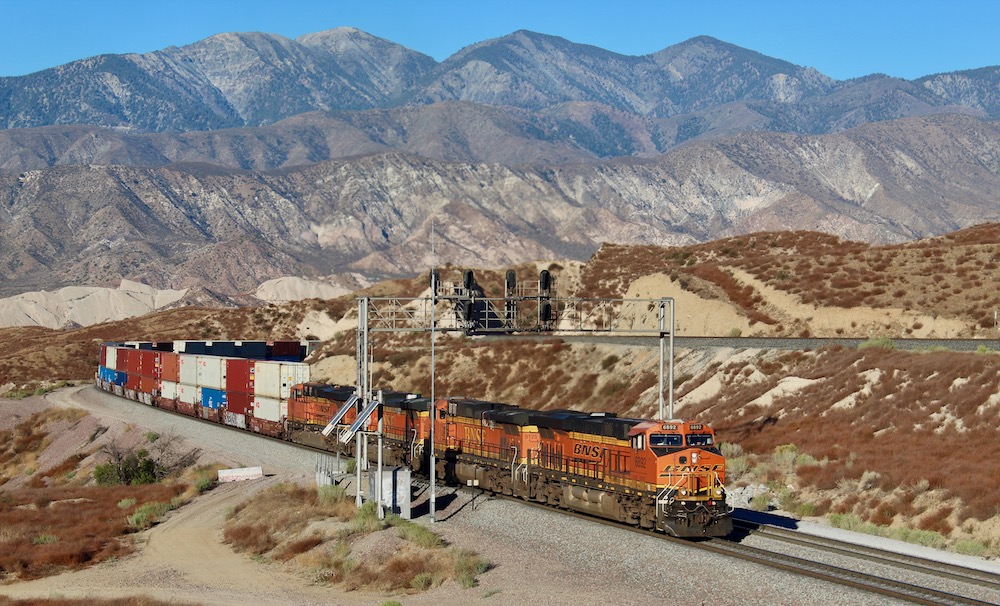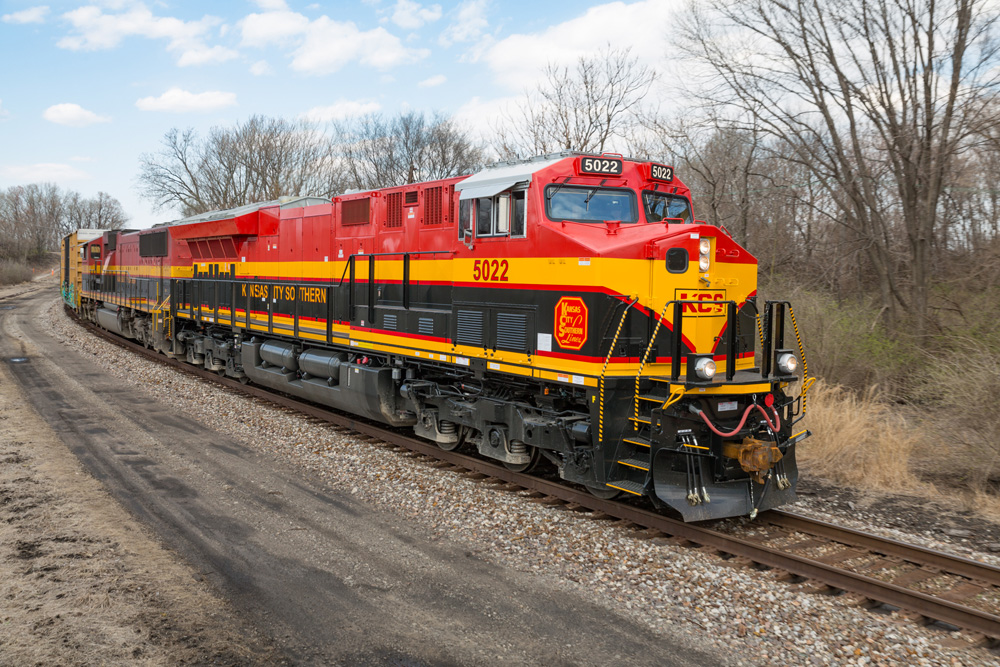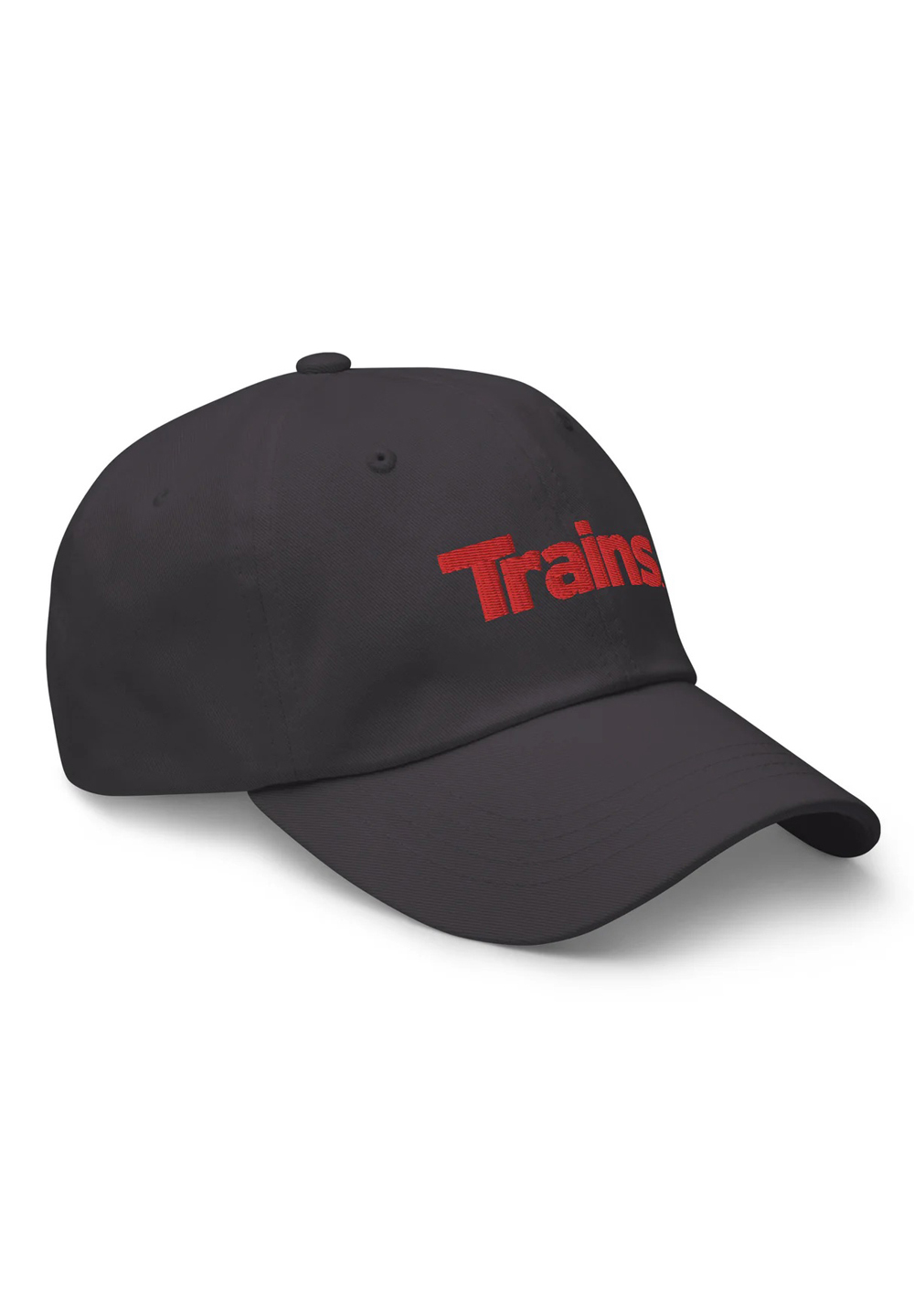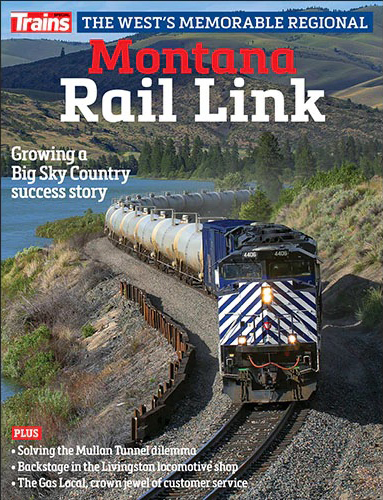
Reflecting the sting of steep tariffs levied on Chinese imports, eastbound international container volume out of Southern California declined to the lowest level in six months during the week ending May 18, according to data from RailState.
The weekly volume was down 5% compared to the prior week and declined 10% compared to the four-week rolling average, the rail traffic monitoring company said.
The data show the impact of the decline in shipments bound to the ports of Los Angeles and Long Beach from China amid the U.S.-China trade war, which saw tariffs as high as 145% on Chinese-made goods and materials.
The international container volume on eastbound trains, tallied by RailState monitors along BNSF Railway and Union Pacific main lines, was 26.3% lower than the peak 2025 week of March 3-9.
“The early March high point coincided with frontloading by importers in advance of the original start date for tariff increases,” RailState said in a LinkedIn post today.
The U.S. and China called a 90-day truce in the trade war last week, with the U.S. reducing tariffs to 30% on most Chinese goods. Many trade experts expect another surge of imports to the U.S. as companies seek to beat the latest tariff deadline.
“We’re expecting to see a return to similar activity in the near-term with companies rushing to build up inventories during the 90-day pause on higher tariffs,” RailState said.
RailState can identify cars and containers by type, including the 20-, 40-, and 45-foot international containers that pass its sensor network.















In such an environment of uncertainty, how can BNSF justify an investment of $1,000,000,000 for BIG?
The first announcement that tariffs were going to be in play was made in the first week of January. TEU volume started peaking as suppliers rushed product out the door. The first actual tariff to impact imports was officially announced on March 4, 2025 against China, Mexico and Canada. The last high peak of TEU’s was on March 3, 2025 and then dropped 15k TEU’s thereafter, which represented the end of the “beat the tariff” rush.
Since then TEU volumes are two thirds of the peak earlier in the year.
So the question begs are railroads simply returning from peak handling operations and returning a new level of normalcy?
Sophie the spammer: please go away. Find some other feed to poison with your b.s.